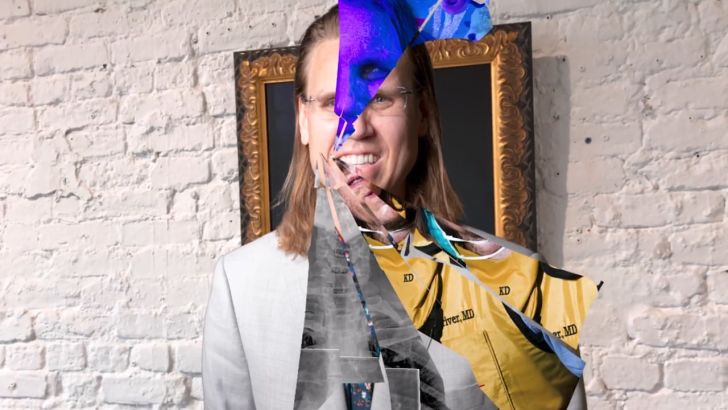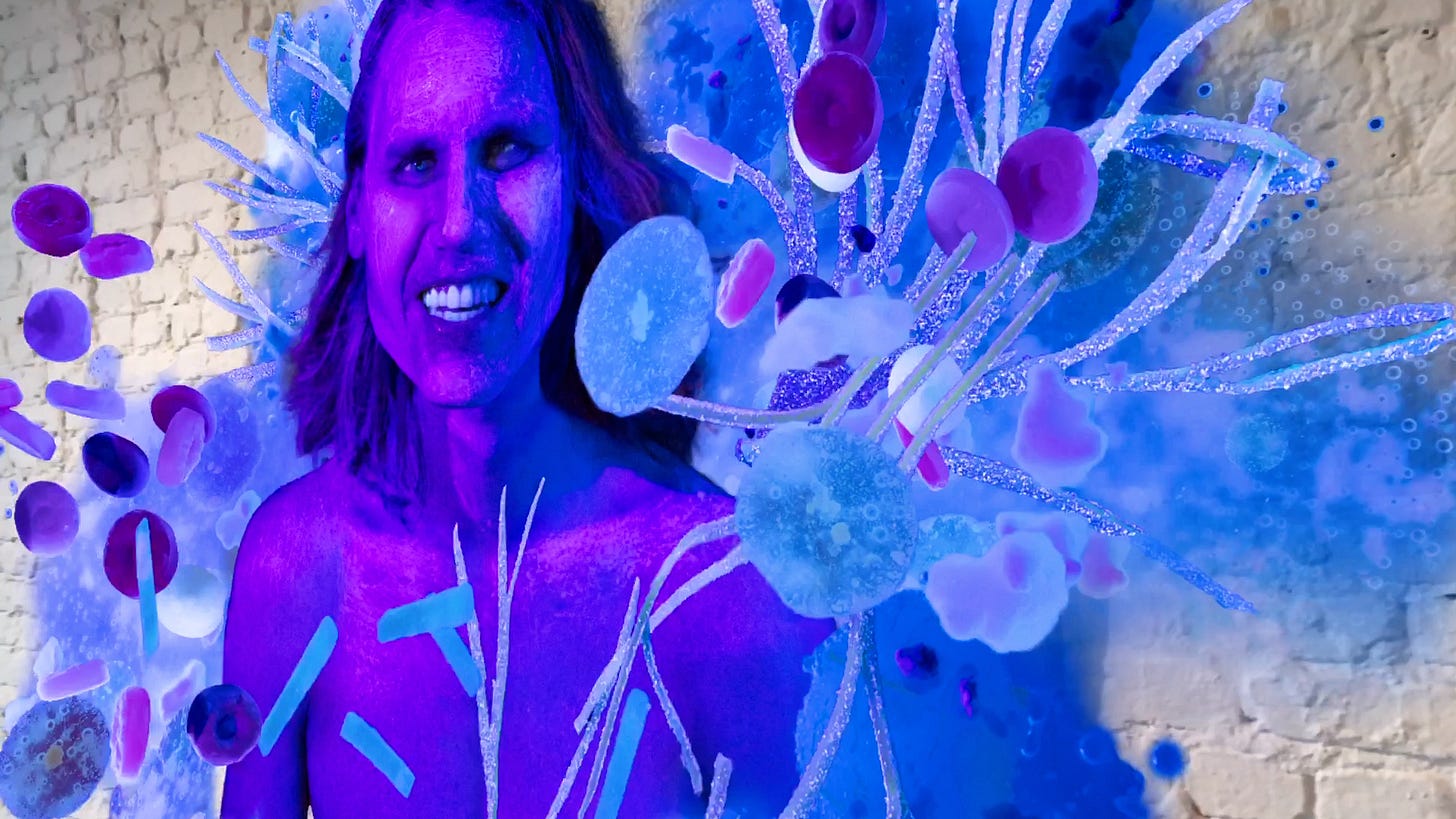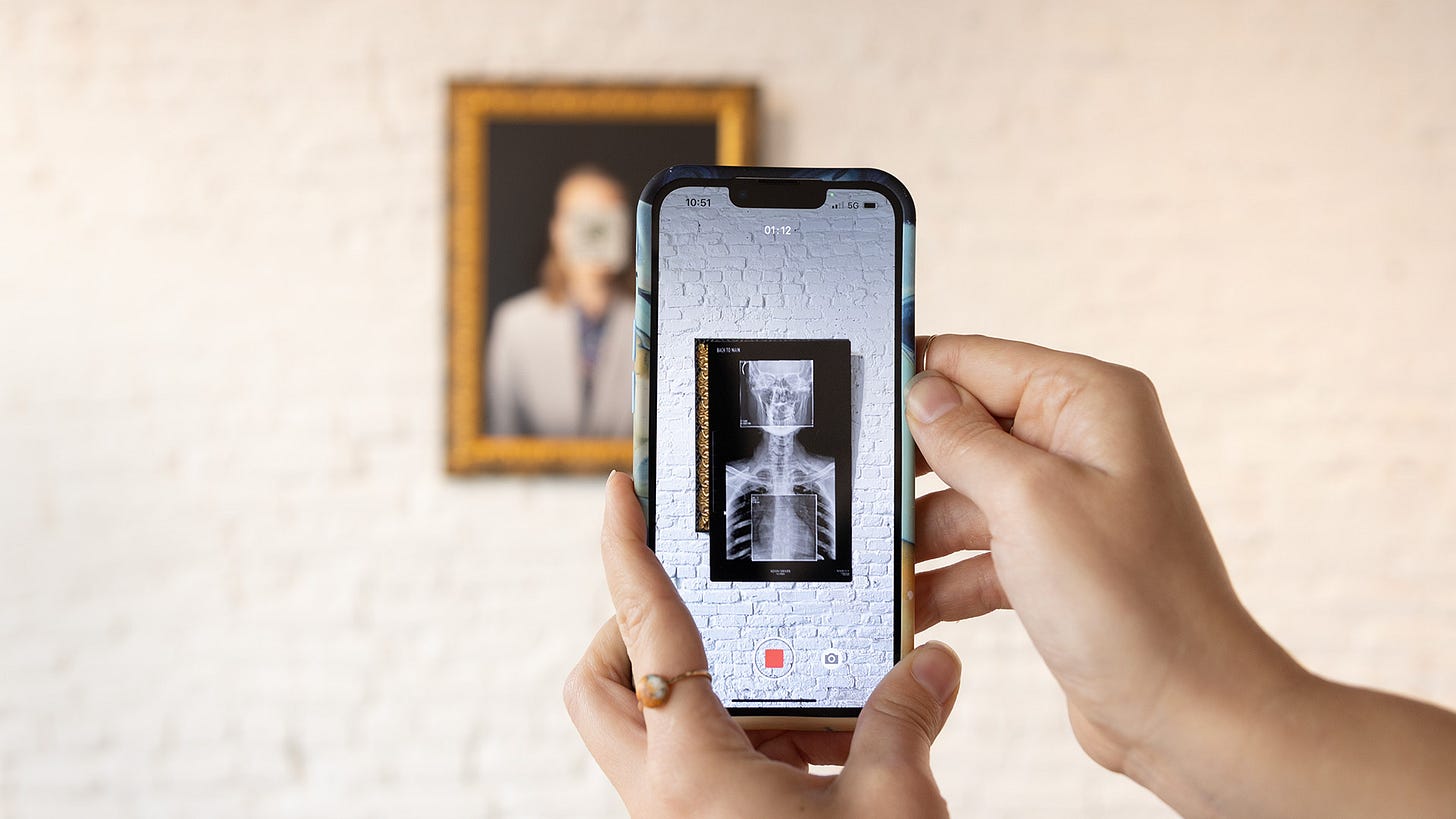Portrait of a Man
How Augmented Reality stands to reinvent portraiture, fine art, and mental health.
Portrait of a Man fuses the futurism of augmented reality with a compassionate mental health message. Most people understand augmented reality as a Snapchat filter or the ubiquitous Pokémon Go!, but more sophisticated avenues are slowly emerging. Portraiture itself is a long-standing vehicle for new technologies. Ancient tech like paint, bronze, and porcelain took on a broader public interest in human form. Even today pixels and crypto art exploded with the widespread availability of PFPs. People love seeing themselves. A human face imprinted with future tech is the height of modernity and has been for millennia.
Augmented reality exposes multiple facets of the portrait’s subject, cardiologist Kevin Driver. Driver is an impassioned art collector who approached Duncan with ideas for a futuristic project. She was already exploring AR as an extension of her photographic style. The shadows and textures feel haptic and more approachable than clean 3D renders in a stark, digital landscape. He was intrigued, and they began formulating concepts around fragmented identities. He arrived at their second interview a little shaken by a recent bipolar diagnosis. Instead of recoiling, both agreed this was a critical aspect in the portrait’s narrative.
THE NARRATIVE
The portrait’s narrative explores a medical professional grappling with bipolar. We see the tension nested within his four identities: the man himself, the mania, the depression, and the doctor. The pandemic highlighted society’s apathy towards medical professionals’ mental health. Doctors and nurses resigned en masse over the last two years from burnout and emotional exhaustion with very little care given to prior underlying conditions. Is this man more than his diagnosis, more than his job?
Within the mania, Driver floats wide-eyed in a pool of cytoplasmic goo. His flow is biological, he’s tapped into nature and the cosmos with his entire being. As the doctor, Driver mimics the posture of Northern Renaissance portraiture. He is dignified and tired, his mask marks emblazoned across his nose. At his chest is a beating heart surrounded by a crown of EKGs, a nod to his dedicated cardiology practice and the depiction of saints. Comparatively the depression is a stripped down version of Driver. He descends into black and white, looking much like the rest of us at the core. His actual skull and heart scans are used in the animated X-ray. Tapping either will trigger an audio file of Driver’s internal monologue and heartbeat.
All and none of Driver’s portraits comprise his identity. Even in his standard public state, the man covered in shards, we never quite see his face. The physical portrait itself takes cues from Magritte’s famed The Son of Man, a QR code obscuring Driver’s face.
HOW IT WORKS
Driver’s portrait consists of four scenes, each conveying a different version of him. Within each portrait is anywhere from 7-20 additional portraits serving as animated tweens. The photos are isolated and saved as layered photoshop documents, then placed on an x, y, or z axis. By utilizing traditional and digital animation techniques, AR creates layers of depth for a person to scrutinize up close or admire at a distance.
Assets include photos of blacklight responsive foods: olive oil, gummy lifesavers, and sour candies. Audio of Driver and heartbeat sound effects were recorded. Stock photos like the large X-ray, the beating heart, and the EKG animation are integrated seamlessly into Duncan’s photography.
Driver is shown as a man obscured by the shards of his different identities. This also serves as the main menu for the experience. Tapping a shard opens up a new scene and identity. The portrait operates like a multi-dimensional website, using UX cues to guide the viewer through the experience. The user must tap the faces to move between scenes with the exception of the skeleton, which has a written cue.
Not only is this portrait technologically innovative, it is also accessible. The project “lives” in the QR code or in a link, which makes it available to anyone with a compliant device and internet connection (can be used offline if loaded while tethered to an internet connection). Using the free app, the project is anchored to a vertical surface, making any wall, door, or window a gallery setting.
Click through to try this out in your home, office, wherever you are.






